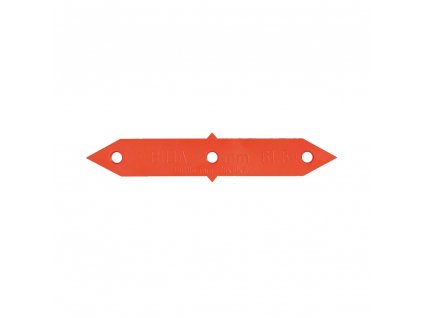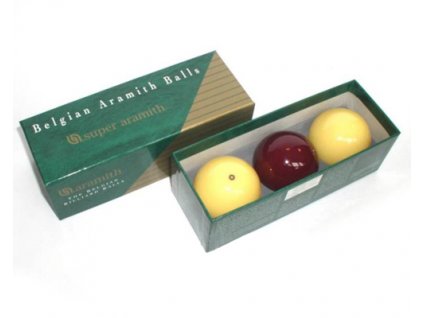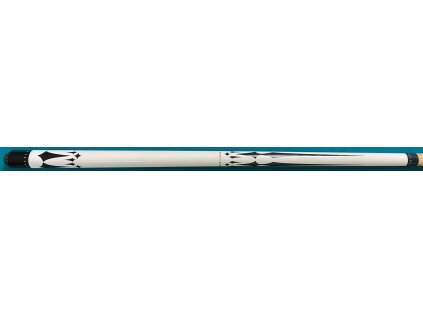Figurky 5ks, 5-pins billiards
Kód: 209120zboží na prodejně
a pozáruční servis
na vracení zboží
stolů na míru
Související produkty
Detailní popis produktu
5 Pins
Česká pravidla ke stažení v záložce "Související soubory"
Five-pin billiards or simply five-pins or 5-pins , is today usually a carom, but sometimes still a pocket, form of cue sport, popular especially in Italy and Argentina but also in some other parts of Latin America and Europe, with international, televised professional tournaments. The game is sometimes referred to as Italian five-pins or Italian billiards or as italiana (in Italian and Spanish).
Equipment
Five-pins table, showing the location of the pins.
The game is played on a pocketless normal 5 ft by 10 ft (1.52 by 3.05 m) carom billiards table, with standardized playing surface dimensions of 1.42 by 2.84 m (approximately 4-2/3 by 9-1/3 ft), plus/minus 5 mm (approx. 0.2 in), from cushion to cushion.
Like most other carom games, five-pins requires three standard carom billiard balls of equal diameter: a red object ball, a cue ball for the first player or team, and another cue ball for the second player or team.
Ball sets vary by manufacturer, but typically are white for first and yellow for second (they may be plain or spotted), or plain white for first and white with a spot for second. The balls are 61.5 mm (2-3/8 in) in diameter and weigh between 205 and 220 g (7.23–7.75 oz; 7.5 oz is average).
The white (or plain white) cue ball is given to the starting player, who may place it anywhere on the head side of the table (without disturbing the pins)—i.e., anywhere unobstructed between the head rail and the center string. The red object ball is placed at the center of the foot spot (i.e., the intersection of the foot string and the long string. The yellow (or spotted white) cue ball of the opponent is placed on the long string, in a position that can be labelled the “foot rail spot”, 10 cm (approx. 4 in) from the foot rail.
As the name implies, the game makes use of five upright pins called skittles in English, which look like miniature bowling pins, 25 mm (1 in) tall, and with 7 mm (0.28 in.) round, flat-bottomed bases. There are traditionally four white pins, and one red.
The red pin is placed on the center spot, and the four white pins are placed equidistant from the red in a square diamond pattern around it. Two whites are aligned along the center string with the head and foot spots, as well as the rail diamonds in the center of the head and foot rails, and with the red object ball, and red pin. Meanwhile, the other two whites are placed on the center string, aligned with the diamonds in the center of the long rails, and again with the red pin. The whites are spaced just far enough away from the red that a cue ball can pass between the pins without touching any of them.
Object
The goal of the game is to earn a required number of points, before one’s opponent does, by using one’s cue ball to cause the opponent’s cue ball to knock over pins (and to not do so with one’s own cue ball), and by contacting the red object ball with either cue ball, after one’s own cue ball has contacted that of the opponent, and/or by causing the object ball to knock over pins, again after one’s own cue ball has contacted that of the opponent.
Play
The game is played by two players or by two teams (a pair of doubles partners most commonly, but also larger teams).
Each player or team is assigned one of the two cue balls; this is the only cue ball they may hit with the cue stick. The first player or team always uses the (plain) white cue ball, the opponent the other ball. Unlike in many games, shots are always taken in rotation – the same player or team never shoots twice in a row even if they have scored (other than if the opponent fouled before actually shooting when their turn came up, such as by moving one of the balls accidentally). Play continues until one player or team wins by being the first to achieve or exceed a specific number of points (usually 50 or 60), either agreed upon beforehand by the players, or set by tournament organizers.
In order to score, the incoming player or team must stroke the assigned cue ball to carom off the opponent’s cue ball —usually directly, but off a cushion is permitted and very common—with the goal of secondarily having the opponent’s cue ball, directly or by way of rebounding off a cushion, next hit the pins and/or the red object ball.
Unlike in the major carom games balkline, straight rail and three-cushion billiards, there is no requirement to hit one or more cushions at any time.
Scoring
Knocking over pins, by any of the acceptable prescribed manners, earns cumulative points as follows:
Each white pin is worth 2 points.
The red pin is worth 4 points, if white pins were also knocked over.
The red pin is worth 10 points, if it is the only pin knocked down (by the ball going between the set of pins and narrowly missing all of the whites).
Knocking over pins with the object ball without hitting the opponent’s cue ball first, or with one’s own cue ball, does not earn the shooter any points, and in the latter case is a foul that awards points to the opponent.
The acceptable means of knocking over pins include any that result from hitting the opponent’s object ball first with one’s own, and not hitting the pins with one’s own cue ball. The object ball itself is also worth points.
If struck by the opponent’s cue ball (after the shooter strikes the opponent’s cue ball with his/her own), it is worth 3 points (this is known as a casin or in broader terminology a combination shot).
If struck by the shooter’s cue ball (after the shooter strikes the opponent’s cue ball with his/her own), it is worth 4 points (this is considered a true billiard/carom or carambola in this game’s nomenclature).
If both a casin and a carambola are achieved in the same shot, only the earliest of the two to occur earns points; they are not combined, though either may still combine with points scored from pins.
Buďte první, kdo napíše příspěvek k této položce.



























